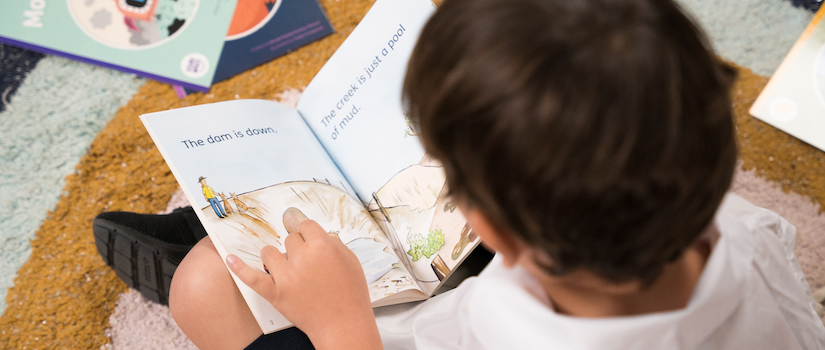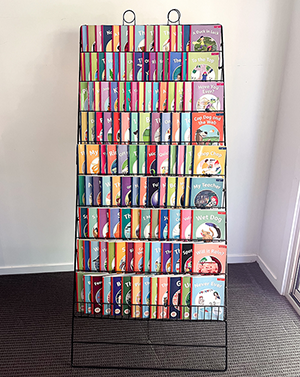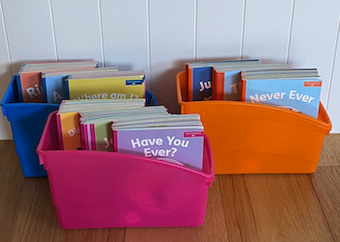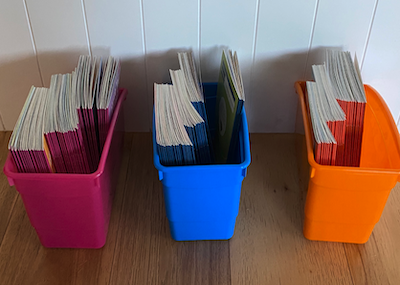Articles & Videos
How to prepare your class for Decodable Readers
Categories
Subscribe to our newsletters
Receive teaching resources and tips, exclusive special offers, useful product information and more!
How to prepare your class for Decodable Readers
Sound Waves Literacy 23/8/23

If you’ve recently made the switch from levelled texts to Decodable Readers, you may be wondering how you can organise these books. Here are our tips for setting up your class for reading success!
Build your library of Decodable Readers as you go
In early years classes, Decodable Readers are an essential part of the classroom library.
The intention of Decodable Readers is to ensure the books align with your synthetic phonics sequence of instruction so that reading practice is systematic and cumulative (and therefore accessible to all students). This means your classroom library should only include the books that feature phoneme–grapheme relationships you’ve explicitly taught. Rather than having all your books available for students at the start of the year, you will gradually add books throughout the year.
When students have access to previously introduced Decodable Readers, they can continue to consolidate their knowledge of phoneme–grapheme relationships and build fluency. As the school year progresses, students will learn more and more phoneme–grapheme relationships, which means the collection grows and they will have an abundance of books to choose from (that are entirely decodable!).
Tip: If your school also uses the eReaders, ensure you unlock the units as you go so that students (and parents) aren’t tempted to jump ahead and read books that include phoneme–grapheme relationships that haven’t been explicitly taught yet.
Provide easy access to the Decodable Readers
Ideally, you want your students reading and interacting with the Sound Waves Decodable Readers as often as possible. In your Sound Waves Literacy lessons, you’ll explicitly teach the focus phoneme–grapheme relationship, then model reading for your whole class using the relevant projectable Decodable Reader. The Decodable Readers come in three levels of difficulty (Support, Core and Extended) to suit various purposes and student abilities. The Core books are ideal for whole-class modelled reading. Students can then practise reading the Support, Core or Extended books in small groups, in pairs and independently.
Best practice is to have students read the physical books that make up your class sets. However, we know that sending physical books home comes with its risks (damaged books and lost books sound familiar?). So for home reading you may choose to set up your students with access to the eReaders.
Tip: A great way to develop reading fluency is to have students re-read previously introduced Decodable Readers. To integrate extra reading practice on top of your dedicated reading lessons, scatter your class sets of Decodable Readers across the desks in your classroom at the start of each day so students can read them when they arrive at school. With this strategy you’ll want to only use the books from prior units of work (not the current week’s unit of work).
Get creative with storage solutions
Finding storage solutions that don’t take up too much space can be challenging. Here are some creative ways teachers are storing and displaying the Sound Waves Decodable Readers in their classrooms.
Trolleys: This storage solution is great for teachers sharing books across different classrooms, or for those short on space. You can also store each set of books on a different shelf to keep books with the same difficulty level together.
Brochure stands: An efficient way to see the cover of each Decodable Reader and its focus grapheme is to display the books in a brochure stand. It comes with the added benefit of the beautiful covers being on display – adding to student engagement appeal!

Book tubs: Place book tubs containing the Decodable Readers at the front of your classroom or in a reading corner to encourage students to read the books multiple times. You can even use colour-coded tubs that match the colours of the Decodable Reader sets!


Show us how you set up your Decodable Readers and tag us on Instagram.